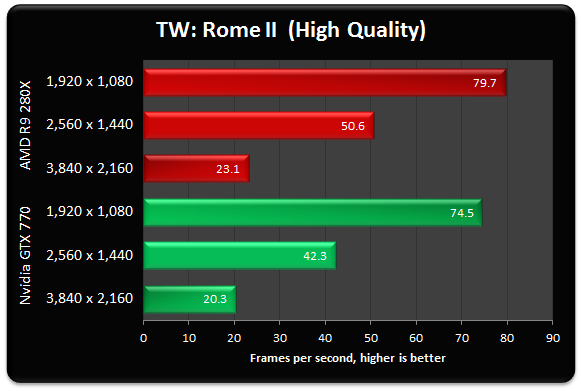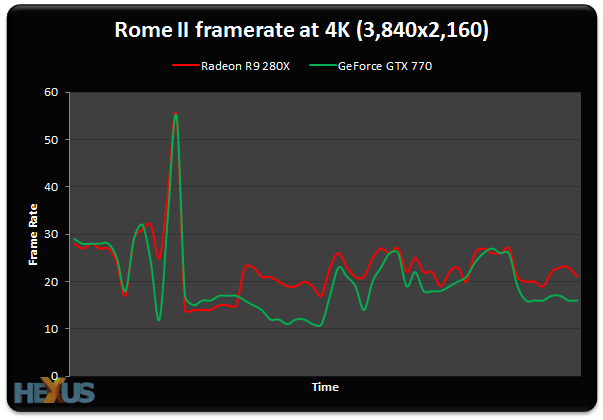Total War: Rome II, and thoughts
 |
Providing an excellent mix of strategy and action, Total War: Rome II's epic turn-based gameplay can swallow hours of your life.

The memory requirements of Total War: Rome II are enough to require the GTX 770's settings to be automatically downgraded a touch at the 4K settings; this does not happen for the AMD card. This means that the result cannot be directly compared against the Radeon R9 280X.

Even so, AMD still has the upper hand in this title. 4K is, well, a few steps too far for high-quality settings. Both cards' framebuffers are completely filled by the needs of the game engine, too.
Lessons learned
The 4K bandwagon first started rolling with gusto during this year's CES show in January. Nearing the end of the year, a few 4K monitors have begun cropping up. Pricing for this nascent technology remains expensive, at around £2,500 a pop, and the consensus is that we're at least 12 months away, possibly 18, before such monitors become what we call affordable.
What we do know is that £250-£300 graphics cards of today can manage just fine at the lower 2,560x1,440 resolution common on same-priced 27in screens. But up the resolution to 3,840x2,160 (4K) and performance, predictably, nosedives. GPUs capable of running the 4K setting need to have incredible memory bandwidth ability coupled with beefed-up render output units (ROPs). This list of characteristics sounds scarily like the good bits from the Nvidia GeForce GTX Titan and upcoming Radeon R9 290X GPUs. We'll see how those play out in due course.













